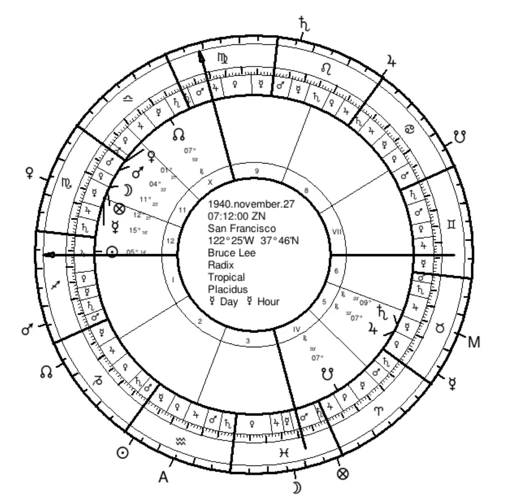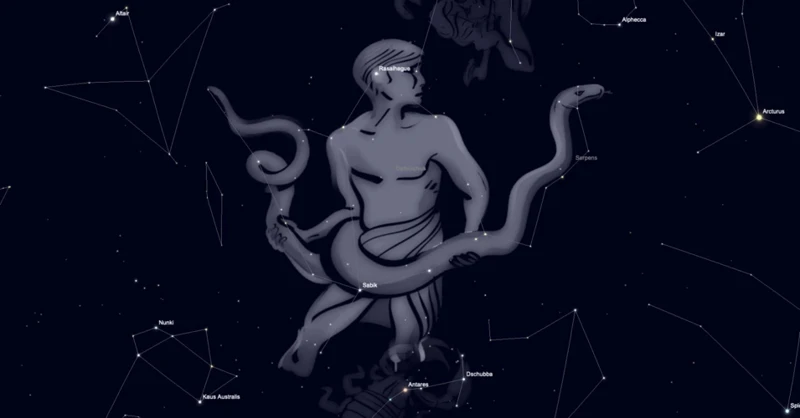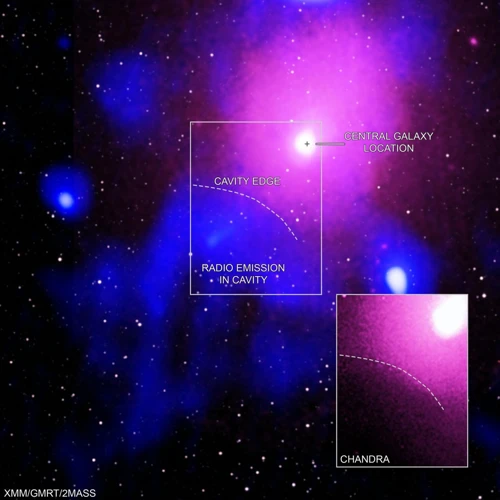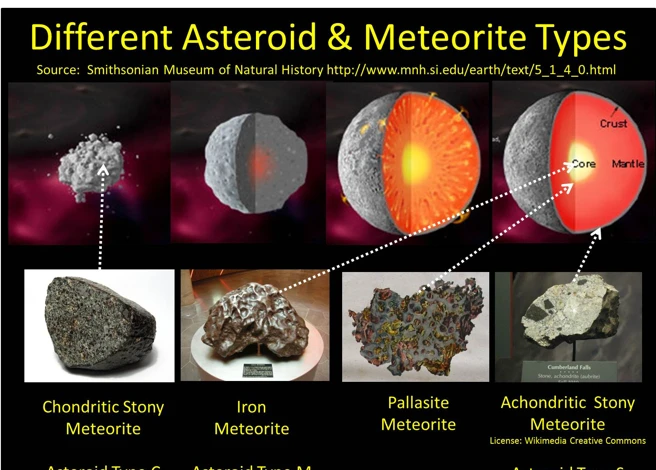Welcome to this fascinating exploration into the science of asteroid classification. In this article, we will delve into the intricacies of categorizing these celestial bodies, uncovering the defining characteristics that set them apart. From their role in the solar system to the various methods employed by scientists to study them, we will navigate through the complex world of asteroid taxonomy. Join us as we shed light on the challenges and limitations faced by researchers, while also looking ahead to the exciting future developments in this field. So, fasten your seatbelts and embark on this cosmic journey to unravel the mysteries of asteroid classification.
Contents
- Asteroid Basics
- Asteroid Classification
- Scientific Methods
- Challenges and Limitations
- Future Developments
- Conclusion
-
Frequently Asked Questions
- 1. What is the definition of an asteroid and what are its characteristics?
- 2. What role do asteroids play in the solar system?
- 3. How are asteroids classified?
- 4. What is taxonomy in asteroid classification?
- 5. What is spectral classification in asteroid classification?
- 6. What is light curve analysis in asteroid classification?
- 7. How does spectroscopy aid in asteroid classification?
- 8. What are the challenges faced in asteroid classification?
- 9. How does incomplete data impact asteroid classification?
- 10. What are the future developments in asteroid classification?
- References
-
Frequently Asked Questions
- 1. How are asteroids defined and what are their main characteristics?
- 2. What is the role of asteroids in the solar system?
- 3. How are asteroids classified through taxonomy?
- 4. What is spectral classification and how is it used for asteroid classification?
- 5. How is light curve analysis used in asteroid classification?
- 6. What is spectroscopy and how does it contribute to asteroid classification?
- 7. What are the challenges in asteroid classification due to incomplete data?
- 8. How do ambiguous categories pose challenges in asteroid classification?
- 9. What future developments can we expect in asteroid classification?
- 10. What role does asteroid classification play in scientific research?
- References
- Read More
Asteroid Basics

Asteroids, those enigmatic objects scattered throughout our solar system, hold a wealth of scientific fascination. These celestial bodies, composed primarily of rocky and metallic materials, vary in size from mere rubble piles to massive structures spanning several kilometers. Their diverse shapes, compositions, and orbits make them a captivating subject of study. Asteroids play a crucial role in the dynamics of our solar system, serving as remnants of the early stages of planetary formation. They orbit the Sun in a diverse range of pathways, some congregating in asteroid belts, while others venture into more solitary trajectories. These intriguing celestial objects provide scientists with valuable insights into the history and composition of our solar system.
1.1 Definition and Characteristics
Asteroids, intriguing objects that populate our solar system, are characterized by their unique composition and distinct traits. These celestial bodies can be defined as small rocky or metallic objects that orbit the Sun. They are remnants from the early stages of our solar system’s formation and are primarily found in the asteroid belt, located between the orbits of Mars and Jupiter. Asteroids come in various sizes, ranging from small boulders to immense structures several kilometers in diameter. Their shapes also exhibit great diversity, with some taking on irregular forms while others are more spherical.
When it comes to their composition, asteroids are predominantly composed of rock and metal, with some also containing volatile substances such as water ice. This composition sets them apart from comets, which are made up of more icy materials. The overall characteristics of an asteroid, including its size, shape, and composition, can provide valuable insights into its origin and history. By studying these aspects, scientists can gain a deeper understanding of the formation and evolution of our solar system. Additionally, the study of asteroid characteristics also plays a crucial role in identifying potential threats from near-Earth asteroids and developing strategies for planetary defense. So, the study of asteroid definition and characteristics is fundamental in unraveling the mysteries of our cosmic neighborhood.
1.2 Role in Solar System
Asteroids play a vital role in the dynamics and evolution of our solar system. These celestial objects, located predominantly in the asteroid belt between Mars and Jupiter, are remnants from the early stages of planetary formation. They offer valuable insights into the origin and composition of our cosmic neighborhood. Asteroids are thought to be the leftover building blocks of the planets, providing a glimpse into the materials and conditions present during the formation of our solar system over 4.6 billion years ago. By studying their compositions, scientists can gain a better understanding of the processes that led to the creation of planets like Earth. Additionally, asteroids can pose potential threats to our planet. While the vast majority of asteroids remain within the confines of the asteroid belt, some can venture into orbits that intersect with Earth’s path. These near-Earth asteroids can sometimes collide with our planet, leading to significant consequences. Hence, understanding the role of asteroids in the solar system is essential for ensuring the safety and preservation of our planet. Through continued research and monitoring, scientists can detect and track potentially hazardous asteroids, devising strategies to mitigate any potential risks they may pose. Excitingly, space missions and advancements in technology allow us to gather more data about these fascinating objects, providing us with the opportunity to further unravel the mysteries of their formation and evolution.
Asteroid Classification

The classification of asteroids is a complex task that involves grouping these celestial objects based on various criteria. One common method of categorization is taxonomy, which classifies asteroids according to their composition, shape, and size. This approach allows scientists to organize asteroids into distinct groups, such as carbonaceous, metallic, or stony. Another classification method is spectral classification, which analyzes the light reflected by asteroids to determine their composition. By studying the patterns and wavelengths of light, scientists can identify the presence of certain minerals or elements in the asteroid’s composition. Spectral classification plays a crucial role in understanding the diversity and origins of asteroids. Additionally, scientists may use a combination of these methods to refine the classification process further. Through rigorous analysis and categorization, we gain a deeper understanding of these celestial objects and the role they play in our ever-expanding knowledge of the solar system.
2.1 Taxonomy
Taxonomy plays a crucial role in classifying asteroids based on their physical characteristics. There are several methods used to categorize these celestial bodies. One of the most common approaches is based on their location within the solar system. Near-Earth asteroids (NEAs) have orbits that bring them within 1.3 astronomical units (AU) of the Sun, while main-belt asteroids reside in the region between Mars and Jupiter, forming the majority of known asteroids. Aside from location, asteroids can also be classified based on their composition. This is determined through analyzing their spectra, or the wavelengths of light they emit or reflect. By studying the absorption and emission lines in the spectra, scientists can gather valuable insights into the mineralogical composition of asteroids. This information helps to further refine their taxonomy. Additionally, asteroid taxonomy can involve categorizing them based on their mineral composition, shape, or size. As the field of asteroid study continues to evolve, new taxonomic classes may be established based on emerging data and discoveries. The taxonomy of asteroids allows scientists to better understand the diversity and origins of these fascinating celestial objects. So, as astronomers uncover more secrets about asteroids, the classification systems will continue to expand, providing a more comprehensive understanding of these enigmatic cosmic bodies.
2.2 Spectral Classification
Spectral classification is a key method used by scientists to categorize asteroids based on the patterns of light they reflect. By analyzing the wavelengths of light, researchers can gain valuable insights into an asteroid’s composition and surface characteristics. This classification system is based on the concept of spectroscopy, which involves breaking down light into its individual wavelengths and studying the resulting spectrum. Different minerals and elements present on the asteroid’s surface absorb and reflect specific wavelengths of light, creating unique spectral signatures. These signatures provide clues about the asteroid’s mineralogy and can help scientists determine its origin and evolution. Spectral classification has led to the identification of several asteroid types, including carbonaceous (C-type), silicate (S-type), and metallic (M-type) asteroids. Each type represents a distinct composition and holds significance in understanding the formation and evolution of our solar system. By studying the spectral characteristics of asteroids, scientists can infer information about their composition, parent bodies, and even potential resources they may possess. This knowledge is invaluable for future space missions and exploration endeavors. Additionally, the spectral classification of asteroids also aids in identifying potential hazards and the likelihood of asteroid impacts on Earth, prompting further research and initiatives for planetary defense.
Scientific Methods

When it comes to studying asteroids, scientists employ a range of scientific methods to unravel their mysteries. Light curve analysis is one such method that involves observing variations in an asteroid’s brightness over time. By analyzing these fluctuations, scientists can determine its rotation period, shape, and even surface features. Another powerful technique is spectroscopy, which involves analyzing the light reflected or emitted by an asteroid. This method provides valuable information about its composition, allowing scientists to identify specific elements and minerals present. By combining these techniques, researchers can gain a deeper understanding of the physical and chemical properties of asteroids, shedding light on their origins and evolution.
3.1 Light Curve Analysis
Light curve analysis is a fundamental scientific method used to study and characterize asteroids. It involves the measurement and analysis of the changing brightness of an asteroid over time. By observing the variations in the asteroid’s brightness, scientists can gain valuable information about its shape, rotation period, and surface properties. The process begins by capturing multiple images of the asteroid at different points in its rotation. These images are then combined and analyzed to create a light curve, which represents the asteroid’s brightness as a function of time. From the light curve, scientists can determine the asteroid’s rotational period, or the time it takes for the asteroid to complete one full rotation. Additionally, light curve analysis allows researchers to identify any variations in brightness, known as light curve features, which can provide insights into the asteroid’s shape and surface composition. This method has played a crucial role in discovering and characterizing thousands of asteroids in our solar system, contributing to our understanding of their physical properties and evolution. It continues to be an indispensable tool in the field of asteroid science, enabling us to unravel the mysteries of these cosmic bodies.
3.2 Spectroscopy
Spectroscopy is a powerful scientific method used to study asteroids and unravel their mysteries. By analyzing the light they emit or reflect, scientists can gain valuable information about their composition and physical properties. This technique involves breaking down the light into its constituent wavelengths or colors, using instruments called spectrometers. Spectroscopy allows researchers to identify the presence of different elements and compounds in an asteroid’s surface or atmosphere. By studying the absorption and emission lines in the spectrum, scientists can determine the chemical composition of these celestial bodies. Spectroscopic analysis helps classify asteroids into different types based on their composition, such as carbonaceous (C-type), silicate (S-type), metallic (M-type), and more. Spectroscopy aids in understanding the processes occurring on or within asteroids, such as the presence of ice or volatile compounds. This method provides invaluable insights into the origins and evolution of asteroids and their role in the formation of planets and other celestial bodies. It is a crucial tool for astronomers and planetary scientists in unraveling the mysteries of these ancient remnants of our solar system.
Challenges and Limitations

As scientists strive to classify asteroids and understand their unique properties, they encounter a myriad of challenges and limitations. One of the primary obstacles they face is the incomplete data available on these celestial bodies. Due to the vastness of space and the limitations of current technology, obtaining detailed information on every asteroid is an arduous task. This lack of comprehensive data hampers the classification process and restricts our understanding of the true diversity of asteroids. Additionally, the ambiguous categories within asteroid classification pose another challenge. Some asteroids exhibit characteristics that overlap multiple categories, making it challenging to assign them to a specific classification with certainty. Despite these limitations, scientists continue to push the boundaries of knowledge, developing innovative techniques and technologies to overcome these challenges and unlock the secrets of these captivating objects in our solar system.
4.1 Incomplete Data
A major challenge that scientists face in the classification of asteroids is the issue of incomplete data. While astronomers have made significant strides in observing and gathering information about these celestial objects, there is still much to uncover. The vastness of space and the sheer number of asteroids present make it impossible to study each one individually. As a result, scientists often have to rely on limited data sets and observations, which can lead to gaps in our understanding of asteroid characteristics. These gaps can hinder the accurate classification of asteroids and limit our ability to accurately categorize them based on their composition, size, and other defining features. In order to address this issue, astronomers are constantly working to improve observational techniques and expand data collection efforts. Advancements in technology, such as more powerful telescopes and space missions targeted at asteroid exploration, have been instrumental in gathering more comprehensive data. However, the challenge of incomplete data persists, and scientists continue to grapple with finding ways to overcome this limitation and enhance our knowledge of these mysterious objects. Through ongoing research and advancements, we hope to fill in these gaps and refine our understanding of asteroid classification further.
4.2 Ambiguous Categories
Asteroid classification faces the challenge of ambiguous categories, adding complexity to the process of organizing and understanding these celestial bodies. The vast number of asteroids and their diverse characteristics make it difficult to define clear-cut boundaries between different groups. For example, some asteroids may exhibit features that could categorize them as both a comet and an asteroid. This ambiguity stems from the nature of these objects, as their physical properties can change over time due to factors such as outgassing or impact events. Additionally, the introduction of new data and improved observation techniques constantly reshape our understanding of asteroids, often blurring the lines between previously established categories. Scientists continually strive to refine and update classification systems to account for these ambiguity and improve our knowledge of our cosmic neighbors. By studying the composition, shape, and behavior of these enigmatic objects, researchers hope to gain valuable insights into the formation and evolution of our solar system.
Future Developments

The field of asteroid classification is constantly evolving, and future developments promise to bring even more advancements. Here are a few areas of exciting progress on the horizon:
1. Improved Data Collection: With advancements in technology and space exploration, scientists are gaining access to more refined and comprehensive data about asteroids. Missions like NASA’s OSIRIS-REx and Japan’s Hayabusa2 are collecting samples from asteroids and bringing them back to Earth for further analysis. These samples will provide valuable insights into the composition and origins of these celestial bodies.
2. Enhanced Spectroscopy Techniques: Spectroscopy, which studies the interaction of light with matter, is a powerful tool for understanding the composition of asteroids. Future developments in spectroscopy techniques will allow for more precise analysis of asteroid spectra, providing detailed information about their mineralogy, elemental composition, and physical properties.
3. Advancements in Machine Learning: The vast amount of data collected from telescopes and space missions requires sophisticated analysis techniques. Machine learning algorithms and artificial intelligence can help process and classify this data more efficiently. These technologies have the potential to uncover hidden patterns and relationships, leading to a deeper understanding of asteroid classification.
4. Smaller Scale Exploration: As space exploration technology becomes more accessible, there is a growing interest in sending smaller spacecraft to explore asteroids up close. These missions can provide high-resolution images, detailed measurements, and even perform in situ experiments. This hands-on approach will contribute to a better understanding of asteroid characteristics and aid in their classification.
5. Collaborative Research: The future of asteroid classification lies in collaboration among scientists, space agencies, and institutions worldwide. The exchange of knowledge, data, and expertise will accelerate progress in understanding and classifying asteroids. Shared databases and open-access resources will facilitate widespread research and foster a collaborative approach to studying these celestial bodies.
These future developments hold great promise for unlocking further mysteries about asteroids and advancing our understanding of their classification. As technology continues to evolve and scientific endeavors push the boundaries of exploration, it is an exciting time to be a part of the field of asteroid science. So, let us keep our eyes on the skies and eagerly await the discoveries that lie ahead.
Conclusion

In conclusion, the science of asteroid classification unveils a captivating world of celestial bodies that continue to intrigue and inspire scientists. Through taxonomical and spectral classification, researchers gain valuable insights into the composition, origin, and behavior of these enigmatic objects. The scientific methods of light curve analysis and spectroscopy provide essential tools for studying asteroids and understanding their physical properties. However, challenges and limitations, such as incomplete data and ambiguous categorization, remind us of the complexity of this field. As technology advances and more data becomes available, future developments in asteroid classification hold great promise for unlocking further secrets of the universe. With each discovery, our understanding of asteroids deepens, shedding light on the formation and evolution of our solar system. So, whether you’re fascinated by the mysteries of the cosmos or simply intrigued by the vastness of space, exploring the science of asteroid classification is a truly awe-inspiring journey.
Frequently Asked Questions

1. What is the definition of an asteroid and what are its characteristics?
An asteroid is a rocky and metallic object that orbits the Sun. It is relatively smaller than a planet but larger than a meteoroid. Asteroids come in various sizes, shapes, and compositions, ranging from rocky and metallic to carbon-rich or even icy bodies. They are remnants of the early stages of our solar system’s formation.
2. What role do asteroids play in the solar system?
Asteroids play a crucial role in the dynamics of our solar system. They are believed to be remnants from the formation of planets and provide clues about the early stages of planetary formation. Additionally, asteroids can impact planets and moons, leading to significant changes in their geological and atmospheric conditions.
3. How are asteroids classified?
Asteroids are classified through a process called taxonomy, which involves categorizing them based on their physical characteristics. They are also classified based on their spectral properties, which provide insights into their composition and mineralogy.
4. What is taxonomy in asteroid classification?
Taxonomy in asteroid classification is the process of categorizing asteroids based on physical characteristics such as size, shape, and composition. It helps scientists better understand the diversity of asteroids and their origins.
5. What is spectral classification in asteroid classification?
Spectral classification in asteroid classification involves studying the light reflected by asteroids across different wavelengths. This helps to identify specific mineral compositions and determine their surface properties.
6. What is light curve analysis in asteroid classification?
Light curve analysis involves studying the variations in the brightness of an asteroid over time. By observing these changes, scientists can determine the asteroid’s rotation period, shape, and even detect the presence of satellites or other orbiting bodies.
7. How does spectroscopy aid in asteroid classification?
Spectroscopy is a method used to analyze the light reflected or emitted by asteroids. By studying their spectral fingerprints, scientists can identify the chemical composition and mineralogy of asteroids, providing insights into their origin and evolution.
8. What are the challenges faced in asteroid classification?
One challenge in asteroid classification is the incomplete data available for many asteroids. Limited observations and uncertainties in measurements can make it difficult to accurately determine their properties. Additionally, some asteroids have ambiguous characteristics or fall into overlapping categories, presenting challenges in classification.
9. How does incomplete data impact asteroid classification?
Incomplete data can make it challenging to accurately classify asteroids. Without comprehensive observations or measurements, scientists may not have enough information to determine an asteroid’s composition, shape, or rotation characteristics. This can lead to uncertainties in their classification and understanding.
10. What are the future developments in asteroid classification?
The future of asteroid classification involves advancements in observational techniques, such as improved telescopes and space missions. Additionally, new machine learning and data analysis methods can enhance our understanding of asteroid characteristics and aid in more precise classification.
References
Frequently Asked Questions

1. How are asteroids defined and what are their main characteristics?
Asteroids are rocky objects that orbit the sun and are smaller than planets but larger than meteoroids. They are primarily composed of metals and rocky materials, and range in size from small boulders to objects several hundred kilometers in diameter. They can have irregular shapes and are known for their diverse compositions.
2. What is the role of asteroids in the solar system?
Asteroids play a crucial role in the solar system as remnants of the early stages of planetary formation. By studying asteroids, scientists gain insights into the composition and evolution of the solar system. They also provide valuable resources and potential targets for future space exploration and mining missions.
3. How are asteroids classified through taxonomy?
Asteroids are classified through taxonomy based on their composition, location, and other characteristics. They are categorized into different groups such as C-type, S-type, and M-type, each representing different mineral compositions. This classification helps scientists understand the origin and history of asteroids in relation to the formation of the solar system.
4. What is spectral classification and how is it used for asteroid classification?
Spectral classification involves analyzing the light reflected by asteroids to determine their composition. By studying the absorption lines in the spectrum, scientists can identify the presence of certain minerals and elements. This information helps classify asteroids into different spectral types, providing valuable insights into their composition and formation.
5. How is light curve analysis used in asteroid classification?
Light curve analysis involves studying the variations in an asteroid’s brightness over time. By observing the changes in light intensity, scientists can determine the rotation period and shape of the asteroid. This information aids in classifying asteroids and provides clues about their physical properties, such as surface features and internal structure.
6. What is spectroscopy and how does it contribute to asteroid classification?
Spectroscopy is a technique that analyzes the interaction of light with matter to study the composition and properties of celestial objects. In the context of asteroid classification, spectroscopy helps determine the mineral composition, presence of organic compounds, and other physical properties of asteroids. This information is crucial for understanding their origin and evolution.
7. What are the challenges in asteroid classification due to incomplete data?
A major challenge in asteroid classification is the limited amount of data available for many asteroids. The lack of comprehensive observations and measurements makes it difficult to accurately classify and characterize asteroids. Scientists often have to rely on indirect methods and extrapolation from limited data sets, which can introduce uncertainties and limitations in the classification process.
8. How do ambiguous categories pose challenges in asteroid classification?
Some asteroids exhibit characteristics that do not fit neatly into existing classification categories, leading to ambiguous classifications. For example, there may be asteroids with mixed composition or transitional properties. This ambiguity makes it challenging to develop clear and rigid classification systems that fully capture the complexity and diversity of asteroids.
9. What future developments can we expect in asteroid classification?
Advancements in technology and space missions will contribute to significant progress in asteroid classification. Ongoing and future missions, such as NASA’s OSIRIS-REx and Japan’s Hayabusa2, will provide detailed data on specific asteroids, improving our understanding of their composition and formation. Additionally, machine learning and data analysis techniques will further refine asteroid classification methods.
10. What role does asteroid classification play in scientific research?
Asteroid classification is essential for scientific research as it helps unravel the mysteries of the solar system’s formation and evolution. By studying asteroids, scientists gain valuable insights into the early stages of planetary formation, the distribution of different materials in the solar system, and potential resources for future space exploration and colonization. Accurate classification enables us to better understand our cosmic neighborhood and the processes that shaped our own planet.







